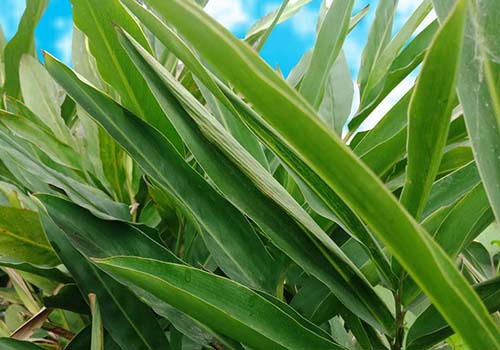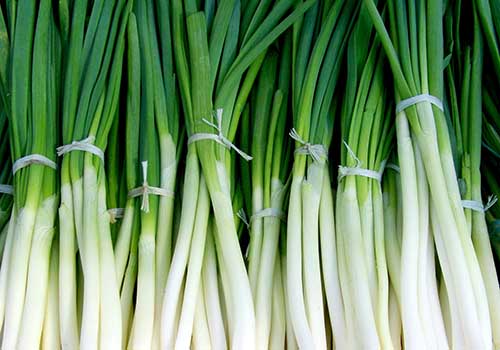Galangal: Galangal belongs to the ginger family, scientific name is Alpinia offìcinamm, Hance. Galangal is a tree that can live for a long time, galangal body grows from tubers. Galangal root is horizontal, bigger than turmeric. Tubers are divided into many branches. The inside of the tuber is white and slightly yellow in color and high in fiber. Galangal skin has cavities, sometimes soft scales, reddish brown. At the end of each branch can develop into germ. Galangal stems are porous, with many purple-colored scales nearer to the root. Galangal leaves do not have stalks, but are held close to the body, shaped like a lanceolate. Galangal leaves grow in 2 alternating rows. Galangal white flowers grow from the top of the tree. United division into many branches, if left for long will bear fruit. Galangal fruits are hairy and seedless.
Galangal planting technique is divided into the following steps:
Step 1: Choose the same
Choose tubers, many sprouts, no scrapes, no pests. Seed volume: 1500-2000kg / ha, depending on the size of the seed.
There are two basic varieties of galangal: white galangal and red galangal.
There are 2 ways to propagate galangal root: extracting shoots from old bushes or using old galangal root without pest or rot, cutting with cuttings, each cutting has at least 2-3 eyes then dot ash stove to brake plastic.
After cutting the cuttings, put them evenly on the trays, leave in a cool, dry place with shade, moisturize to incubate the cuttings within 1-2 weeks, the galangal cuttings will appear. – 2 sprouts can be planted.
Step 2: Prepare the soil
Galangal is a tree that can be grown anywhere with a height of 1m – 2500m2 above sea level, such as hills, gardens, faded yards, salty cops … But on porous soil, much humus, where enough moist, sunny, arrowroot thrives, yielding high tubers, good quality. Therefore, alluvial and riparian areas are most suitable.
Galangal tubers develop tubers horizontally, roots deep into the soil, so the soil must pay attention to plowing 15-20 cm deep, harrow thoroughly, pick up grass.
+ If planting galangal root on hilly land, rocky soil, drainage area, it is not necessary to do soil but after clearing grass, adding holes about 20cm x 20cm, about 20 x 25cm deep and planting. the soil sings to the top of the slope, meets with rain, colors pile down into holes, additional nutrients for the tree.
+ If planted on fields, gardens, or stagnant water, the bed should be 140cm wide.
Step 3: Planting techniques
Season: Galangal is grown from February to May in the North, from June to June in the South, preferably early in the rainy season.
Planting: Galangal is due to the process of bulging of rhizomes. Therefore planting density has an impact on the growth and development of galangal leaves and stems.
Planting density is about 30,000-40,000 trees / ha (depending on the terrain).
Planting method: After cutting grooves or filling holes, apply mixed organic fertilizer with phosphorus, cover with a thin layer of soil, place the bulbs into the tubers, the seedlings are 12-15cm deep, sprout upwards and cover the thin soil layer. After planting, if there is straw covering, moisturizing the bed surface is best.
Fertilizing the tree: Cu galangal is easy to grow but due to the long growth period (280 days), the amount of fertilizer provided to the plant needs to be sprayed and reasonable in stages, it will give high yield. If acidic soils need more lime. As galangal, galangal plants need a lot of potassium, but also need nitrogen fertilizer, phosphorus and other trace elements, depending on the growth stage to fertilize. Fertilizers are more sulfate-based than chloride-based fertilizers.
Organic fertilizer 10 -15 tons: 200 kg N: 120 kg P205: 200 kg K20
– How to apply:
Basal fertilizing: All organic fertilizer and phosphorus.
The first application: When transplanting 5-6 leaves: Apply 1/3 of nitrogen + 1/3 of potassium (Plant grows and branches rapidly)
The 2nd application: 30-45 days after the first application: Apply 1/3 of the protein and 1/3 of the potassium (promote plant growth and development)
Applying the 3rd time: After the second time, about 50-60 days: Applying the remainder of the remaining fertilizer (Promoting root development)
In addition, if you want to grow well tubers should use garbage straw, green leaves … covering the root to porous soil, moisturizing the tubers to eat and provide food for the plants.
Harvesting: When the tree stalks off, the stems turn yellow, the leaves become discrete, many leaves near the stump are old trees that can be harvested (if early harvesting greatly affects productivity) after planting more about 1 year is harvestable, galangal is perennial, so the longer the planting time, the bigger and more spicy galangal root. Galangal root can be dried or soaked to make very good medicinal alcohol.







